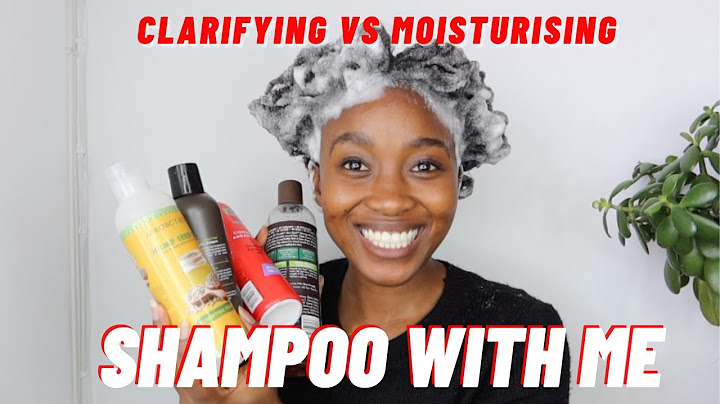 Show If you want to win the battle against damaged hair, then you need to know how to prevent split ends. And while many of us simply resort to snipping our split cuticles, there are plenty of tips for repairing and preventing split ends. 1. Brush through your hair before showering. 2. Use plenty of conditioner while showering and use a leave-in after, if need be. 3. Try not to brush your hair while it's wet. 4. Lay off the heat styling tools. 5. When getting your hair trimmed, cut about 1 ½-inches above your split ends. 6. Use a split end treatment to prevent splitting. Image via Imaxtree SEE NEXT PAGE: Best Split End Treatment No. 13: Macadamia Professional Deep Repair Masque, $36 EDITORS' BEST OF
 12 Best Acne Products for Your Clearest Skin Yet Read More
 11 Best Tinted Moisturizers for Easy, On-the-Go Coverage Read More more stories  Ever exposed to the elements, hair undergoes a unique amount of stress. Whether from habits like coloring and heat-styling to environmental factors such as sun exposure, the damage done to strands can cumulatively take a toll. One unwelcome consequence is breakage—that is, when the hair snaps off at a weakened point, leaving behind both flyaways and strands that fall haphazardly at varied lengths. Just about everything can weaken hair. Chemical treatments and color processes break disulfide bonds in order to install lasting changes, such as hair-fiber shape. In addition, research has found that external aggressors, including air pollution and UV exposure, have been linked to broken disulfide bonds. Meanwhile, heat, humidity, and even water from a shower can temporarily break hydrogen bonds. The result of that molecular-level disruption is overall weakness, with damage accumulating over time. However, it doesn’t stop at bonds. Another consequence of distress is that the cuticle—the outer layer of the hair fiber, likened to shingles on a roof—can become frayed. In time, that protective exterior “tends to shed,” says hairstylist Felicia Leatherwood, who counts Issa Rae and Wunmi Mosaku among her clients. When the cuticle has been compromised in such a way, the hair has trouble retaining moisture as well. As a result, the hallmarks of weak hair include dryness and a brittle feel, as well as more frequent frizz, says colorist Jenna Perry, whose fashion-world clientele includes Bella Hadid and Karlie Kloss. All of that can lead to hair that’s easily tangled, she notes. Fortunately, hair strengtheners abound, and many now offer the highly effective ingredients once reserved for skin care. Leatherwood is particularly fond of aloe vera and glycerin, as well as oil treatments with jojoba, olive, and coconut oils. Perry, meanwhile, is a proponent of peptide treatments—peptides being short strings of amino acids that can form proteins—as well as bonding masks, a category of products that relink or repair those broken bonds. It’s worth noting that consistency is as important as the remedy itself. “At-home treatments work only if you actually do them regularly and stick to a schedule,” says Leatherwood. “Usually, you have to stick with it from 30 to 90 days to see the results come to fruition.” After all, if forgoing color appointments and blowouts are not in the cards, then this regular maintenance is essential for keeping hair healthy, hydrated, and strong in the long one. The good news? These potent formulas, below, make it particularly easy. All products featured on Vanity Fair are independently selected by our editors. However, when you buy something through our retail links, we may earn an affiliate commission. How do you fix split ends and breakage?Unfortunately, you can't treat or repair split ends. So once the ends of your hair become damaged or frayed, the only way to get rid of them is to cut them off. That's why prevention is key to keeping your hair healthy and free of split ends.
Can your hair recover from split ends?When it comes to fixing split ends, you can't ever fully repair the damage that's been done and get back to untouched, virgin hair, but you can temporarily mend the strand. The only real cure for split ends is trimming them off.
Which hair treatment is best for hair breakage?Best Fast Fix: Amika Kure Multi-Task Repair Treatment
It's so effective that after just three uses, it leaves hair up to 2.4 times stronger and with 58% less breakage.
Is hair breakage the same as split ends?In a hair breakage situation, your hair shaft breaks. It results in split ends and your hair strands become shorter. This is because the hair is constantly suffering from dryness and damage on the scalp area. Before your hair breaks, you will notice that it loses colour and eventually turns into split ends.
|

Related Posts
Advertising
LATEST NEWS
Advertising
Populer
Advertising
About

Copyright © 2024 membukakan Inc.


















